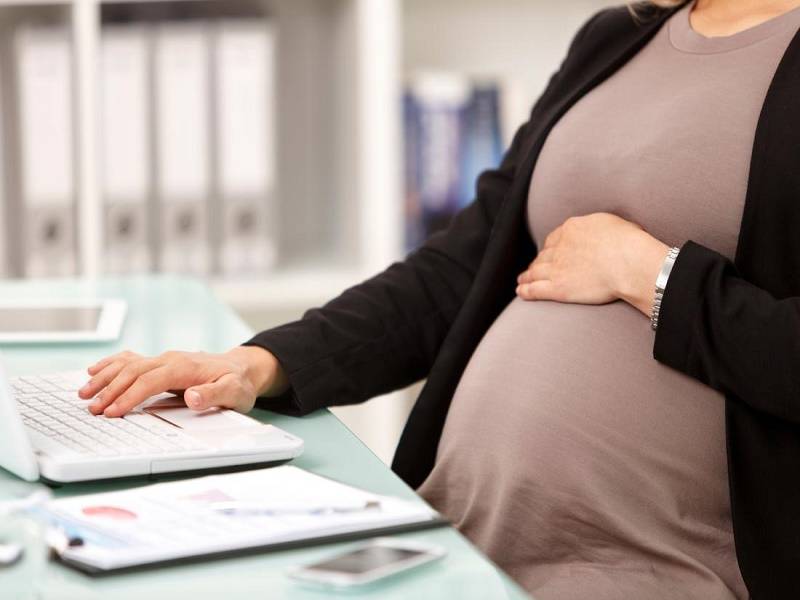In this article:
What is Effacement?
What is Dilation?
What Causes Cervical Dilation and Effacement?
What All Should Be Known About Cervical Dilation and Effacement?
What is Done About Cervical Dilation and Effacement?
Stages of Labor
What is Effacement?
When the baby’s head drops down into the pelvis, it pushes against the cervix which causes the cervix to relax and thin out or efface. During pregnancy, the cervix has been closed and protected by a plug of mucus. When the cervix effaces, the mucus plug becomes loose and passes out of the vagina. The mucus may be tinged with blood. Passing the mucus plug is called as “show” or “bloody show”. It may be noticed when the mucus plug passes. It is measured in percentage.
What is Dilation?
After the cervix begins to efface, it will also start to open which is called cervical dilation. It is measured in centimeters.
Dilation, the opening of the cervix and effacement, the thinning of the cervix, occur in a pregnant woman as labor and delivery get closer. The timing is different in every woman. For some women, it is a gradual process that takes weeks or even a month, others can dilate and efface overnight.
A Guide for Cervical Dilation and Effacement
What Causes Cervical Dilation and Effacement?
The cervix is preparing for delivery by providing an opening from the uterus to the birth canal to unblocking the path to the baby’s exit route. As labor nears, the cervix may state to stretch or thin (efface) and open (dilate). This helps the cervix for the baby to pass through the birth canal (vagina). The opening and thinning varies for each woman. In some women, the cervix may start to efface and dilate slowly over a period of weeks, but for a first time mother often will not dilate until active labor starts. Late in the pregnancy, the doctor may check the cervix with the fingers to see how much it has effaced and dilated by wearing sterile gloves. During labor, contractions in the uterus open (dilate) the cervix. They also help the baby into position to be born.
What All Should Be Known About Cervical Dilation and Effacement?
In the beginning of the ninth month of pregnancy, the doctor will look for clues that labor is getting closer, by palpating the abdomen and giving an internal exam to check the cervix. In addition to seeing if baby’s dropped, the doctor confirming whether the cervix has dilated and effaced and of it’s begun to soften and move to the front of the vagina ( is another indication that labor is getting closer).
As the cervix continues to thin and open, the cork of mucous that seals the opening of the cervix (otherwise known as the mucous plug) becomes dislodged. It may or may not notice it happen and it can occur anywhere from a couple of weeks to hours before labor starts. Then a few days to 24 hours before delivery day, there will be bloody show as the cappilaries in the cervix begin to rupture, tinting vagina mucous pink or streaking it with blood.
Throughout this process, the cervix will keep on effacing and dilating. In early labor (those days to possibly weeks before it’s time to go to the hospital), the cervix will dilate to about 3 centimeters, by active labor it will increase to about 7 cms. Full cervical dilation, when the cervix measures 10 cm it occurs at the end to the transitional phase (the last of the three phases of labor). Once this happens, it’s time to start pushing the baby out.
What is Done About Cervical Dilation and Effacement?
Not a thing, the body is in charge here. Once the doctor gives the estimate for the baby’s arrival, just keep an eye out for other signs of labor so it will be known and be prepared when it’s time to go to the hospital. Occasionally if the labor stalls or there is certain risk factors, the doctor may decide that there’s a reason to induce labor and will take steps to move the process along.
Stages of Labor
The cervix is small like a tightly closed hole. It prevents anything from getting into or out of the uterus which helps to protect the baby. These contractions put pressure on the cervix and cause it to expand slowly. The contractions become stronger, comes close together and more regular as labor progresses.
The three main stages are –
Stage 1 – it is early, active and transition labor. Contractions starts, the cervix dilates and the baby moves down in the pelvis. It is completed when the cervix has dilated to 10 cm.
Stage 2 – in this, the body begins pushing out the baby. A strong urge to push is felt by the women during this stage. This stage ends with the birth of the baby.
Stage 3 – in this contractions push out the placenta. This stage ends with the delivery of the placenta, which is usually within a few minutes after the birth of the baby.
However, these stages varies in women and experience labor differently.
Stage one: early labor
The cervix dilates to the following sizes –
- 1 cm, about the size of a cheerio
- 2 cm, the size of a small to medium-sized grape
- 3 cm, the size of a quarter
Late in the pregnancy, the cervix may have already dilated several centimeters before experiencing any symptoms of labor by the woman.
Some women, particularly those who give birth for the first time, have difficulty in telling whether labor has begun. This is because of the contractions in early labor are often mild and irregular, growing steadily more intense as the labor progresses and the cervix dilates.
During a true labor, the contractions –
- Are not just on one side of the body
- Begin at the top of the uterus and feel like they are pushing down
- Get more intense and regular with time
- Do not stop with rest or taking a warm shower
Active labor – during this stage one active labor, the cervix dilates to the following sizes –
- 4 cm, the size of a small cookies
- 5 cm, the size of a mandarin orange
- 6 cm, the size of a small avocado
- 7 cm, the size of a tomato
During active labor the labor contractions become more intense and regular and these contractions are extremely painful than uncomfortable.
At this stage, medications can be used like an epidural to cope with the pain. Also, it can be managed naturally by changing positions, moving and remaining hydrated can help with the pain of active labor.
Transition phase – during this phase of stage one, the cervix dilates to the following sizes –
- 8 cm, the size of an apple
- 9 cm, the size of a donut
- 10 cm, the size of a large bowel
This is the most challenging stage for many women and also the shortest. Some women begin feeling an urge to push during the transition stage. It is common to feel overwhelmed, hopeless or unable to cope with the pain and some women may vomit. Also, the coping strategies that worked well in the earlier stages of the labor are no useful. This phase is a sign that the baby will soon arrive. Moving, changing positions and visualization exercises can help. In this stage the cervix continues dilating and transition ends when the cervix is fully dilated.
Stage two: full dilation and pushing
Once the cervix has reached 10 cm, it is the time to push the baby out. Contractions continue but also produce a strong urge to push the baby. This stage lasts for a few minutes to a few hours. It is often longer for those giving birth for the first time. Pushing from a standing or squatting position will also help speed things along.
As a woman delivers the baby, there may be an intense burning and stretching as the vagina and perineum stretch to accommodate the baby. This sensation typically lasts just a few minutes.
Stage three: after the birth
A few minutes after the birth, a woman experiences weak contractions. After a contraction or two, the body expels out the placenta. Sometimes, a woman is given an injection of synthetic oxytocin to speed up delivery and prevent excessive bleeding.
As the uterus and cervix shrink, many women undergo some contractions. Most women tend to bleed for several weeks after giving birth.
Conclusion
Dilation and effacement allow a baby to be born through the birth canal. Dilation means that the cervix opens and effacement means that the cervix stretches and gets thinner.
Refrence
https://www.whattoexpect.com/pregnancy/symptoms-and-solutions/dilation-and-effacement.aspx
https://www.medicalnewstoday.com/articles/322615.php













